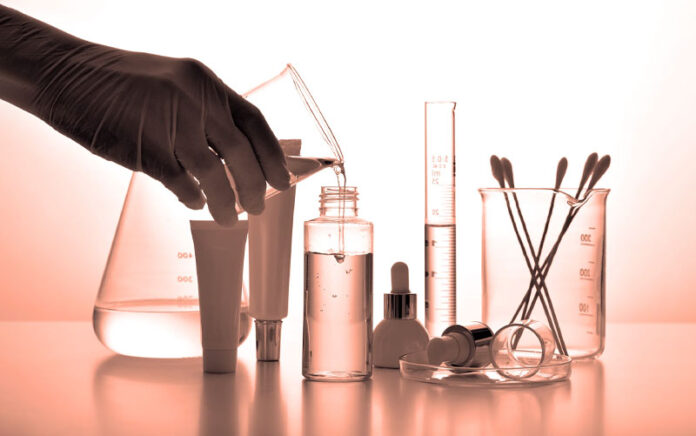
When it comes to skincare, it’s easy to get overwhelmed by the plethora of products available on the market. From cleansers and toners to serums and moisturizers, there seems to be an endless array of options promising to transform your skin. But how do you separate the hype from the reality? The key lies in understanding the science behind skincare ingredients.
The Role of Ingredients in Skincare
Skincare products are formulated with specific ingredients that target various skin concerns. These ingredients work in harmony to cleanse, nourish, protect, and rejuvenate the skin. Understanding the role of these ingredients can help you make informed decisions about which products are best suited for your skin type and concerns.
Cleansing Ingredients: Gentle yet Effective
Cleansers are the foundation of any skincare routine. They remove dirt, oil, and impurities from the skin, preparing it for subsequent treatments. Look for cleansers that contain gentle surfactants such as coco-glucoside or decyl glucoside. These ingredients effectively remove impurities without stripping the skin of its natural oils, leaving it feeling clean and refreshed.
Nourishing Ingredients: Feeding Your Skin
Nourishing ingredients help replenish and hydrate the skin, keeping it healthy and supple. One such ingredient is hyaluronic acid, a powerful humectant that attracts and retains moisture. It acts like a sponge, drawing water into the skin and preventing dehydration. Another beneficial ingredient is ceramides, which form a protective barrier on the skin, preventing moisture loss and enhancing its natural resilience.
Targeted Treatments: Active Ingredients for Specific Concerns
If you have specific skin concerns such as acne, hyperpigmentation, or wrinkles, targeted treatments can help address these issues. Active ingredients like salicylic acid and benzoyl peroxide are effective in treating acne by unclogging pores and reducing inflammation. For hyperpigmentation, look for ingredients like vitamin C or niacinamide, which help brighten the skin and even out skin tone. Retinol, a derivative of vitamin A, is a popular ingredient for reducing the appearance of wrinkles and fine lines.
Protective Ingredients: Shielding Your Skin
Protecting your skin from environmental aggressors is crucial for maintaining its health and preventing premature aging. Antioxidants, such as vitamin E and green tea extract, help neutralize free radicals and protect the skin from oxidative stress. Another essential ingredient is broad-spectrum sunscreen, which shields the skin from harmful UV rays. Look for a sunscreen with an SPF of 30 or higher and ingredients like zinc oxide or titanium dioxide for optimal protection.
Natural and Synthetic Ingredients: Debunking the Myth
There is often a debate between natural and synthetic ingredients in skincare. While natural ingredients can offer benefits, it’s important to note that not all natural ingredients are safe or effective, and not all synthetic ingredients are harmful. Many synthetic ingredients undergo rigorous testing to ensure their safety and efficacy. The key is to look for products that are backed by scientific research and have undergone clinical trials, regardless of whether they contain natural or synthetic ingredients.
Reading Labels: Decoding Skincare Jargon
Reading skincare product labels can be confusing, with a myriad of scientific names and abbreviations. Here are some common skincare ingredients to look out for:
- Retinoids: A group of vitamin A derivatives known for their anti-aging properties.
- Alpha Hydroxy Acids (AHAs): Chemical exfoliants that promote cell turnover and reveal smoother skin.
- Hyaluronic Acid: A hydrating ingredient that locks in moisture for plump and supple skin.
- Peptides: Chains of amino acids that help stimulate collagen production and improve skin firmness.
- Antioxidants: Ingredients that neutralize free radicals and protect the skin from environmental damage.
Building Your Skincare Routine
Building a skincare routine that works for you is a journey of self-discovery. It’s important to understand your skin type, concerns, and goals. Experimentation may be necessary to find the right combination of products and ingredients that suit your skin. Remember, skincare is not one-size-fits-all, and what works for someone else may not work for you.
Daily Skincare Routine: Achieving Healthy, Glowing Skin
Taking care of your skin is a daily ritual that can help you achieve and maintain a healthy, glowing complexion. Here’s a step-by-step guide to a basic skincare routine that you can follow:
Step 1: Cleansing
Start by cleansing your face with a gentle cleanser suited for your skin type. Wet your face with lukewarm water, apply the cleanser, and gently massage it into your skin using circular motions. Rinse thoroughly and pat your face dry with a clean towel.
Step 2: Toning
After cleansing, apply a toner to help balance the pH level of your skin and remove any residual impurities. Use a cotton pad or your fingertips to apply the toner to your face and neck, avoiding the eye area.
Step 3: Serum or Treatment
Next, apply a serum or treatment product targeting your specific skin concerns. Whether you’re looking to address wrinkles, dark spots, or dehydration, choose a product with active ingredients known to address those issues. Apply a small amount and gently massage it into your skin.
Step 4: Eye Cream
The delicate skin around the eyes requires special attention. Apply a pea-sized amount of eye cream using your ring finger and gently pat it around the orbital bone, avoiding direct contact with the eyes. Eye creams help hydrate the skin, reduce puffiness, and diminish the appearance of fine lines.
Step 5: Moisturizer
Hydration is essential for healthy skin, regardless of your skin type. Choose a moisturizer that suits your skin’s needs, whether it’s lightweight for oily skin or richer for dry skin. Apply a generous amount to your face and neck, gently massaging it in upward motions.
Step 6: Sunscreen
Protecting your skin from the sun’s harmful UV rays is crucial. Apply a broad-spectrum sunscreen with an SPF of 30 or higher as the last step in your morning skincare routine. Be sure to cover all exposed areas of your skin, including your face, neck, and any other exposed body parts.
Additional Tips:
- Exfoliation: Incorporate exfoliation into your routine once or twice a week to remove dead skin cells and reveal a brighter complexion. Use a gentle exfoliator suited for your skin type.
- Nighttime Routine: In the evening, follow the same steps, excluding sunscreen. Instead of sunscreen, you can use a night cream or a moisturizer with ingredients that promote skin repair and rejuvenation.
- Hydration: Drink plenty of water throughout the day to keep your skin hydrated from within.
- Healthy Lifestyle: Maintain a balanced diet, exercise regularly, and get enough sleep to support overall skin health.
FAQs
How often should I wash my face?
It is generally recommended to wash your face twice a day – once in the morning and once before bed. However, if you have excessively oily skin or engage in activities that cause sweat and dirt buildup, you may want to cleanse more frequently.
Can I skip toner in my skincare routine?
While toner is not a mandatory step, it can provide added benefits to your skincare routine. Toner helps balance the skin’s pH level, remove impurities, and prepare the skin to better absorb subsequent products.
How do I choose the right moisturizer for my skin type?
Consider your skin type and specific concerns when selecting a moisturizer. For oily skin, opt for lightweight, oil-free moisturizers. Dry skin may benefit from richer, more hydrating formulas. Combination skin can benefit from moisturizers that balance moisture levels.
Do I need to wear sunscreen indoors?
Yes, it’s still important to wear sunscreen indoors since UVA rays can penetrate through windows. Additionally, exposure to blue light emitted by electronic devices may have long-term effects on the skin.
Is it necessary to use separate products for the eye area?
The skin around the eyes is thinner and more delicate, requiring specialized care. Using an eye cream or gel specifically formulated for the eye area can help address concerns such as puffiness, dark circles, and fine lines.
How long does it take to see results from a skincare routine?
Skincare results can vary depending on individual factors and the products used. Consistency is key. It may take a few weeks or longer to notice significant improvements in your skin’s texture, tone, and overall appearance.
Conclusion
Understanding the science behind skincare ingredients empowers you to make informed decisions about your skincare routine. By knowing the role of different ingredients and their effects on the skin, you can choose products that align with your specific needs and concerns. Remember to prioritize scientific research, read product labels, and listen to your skin’s unique requirements. With the right knowledge and a personalized approach, you can unlock the secrets to healthy, glowing skin.
Now that you have a deeper understanding of skincare ingredients, it’s time to embark on your skincare journey and discover the products that will help you achieve your skin goals. Happy exploring!






